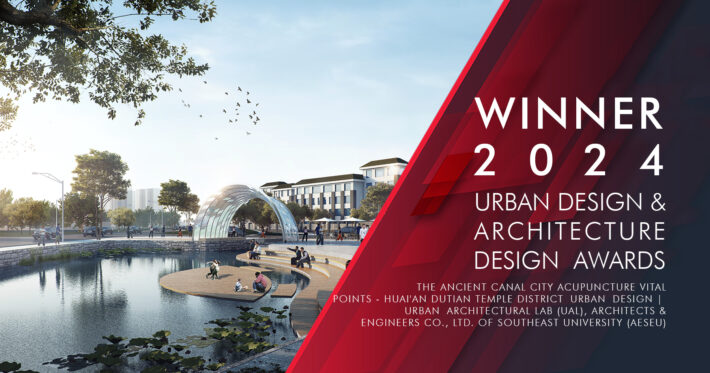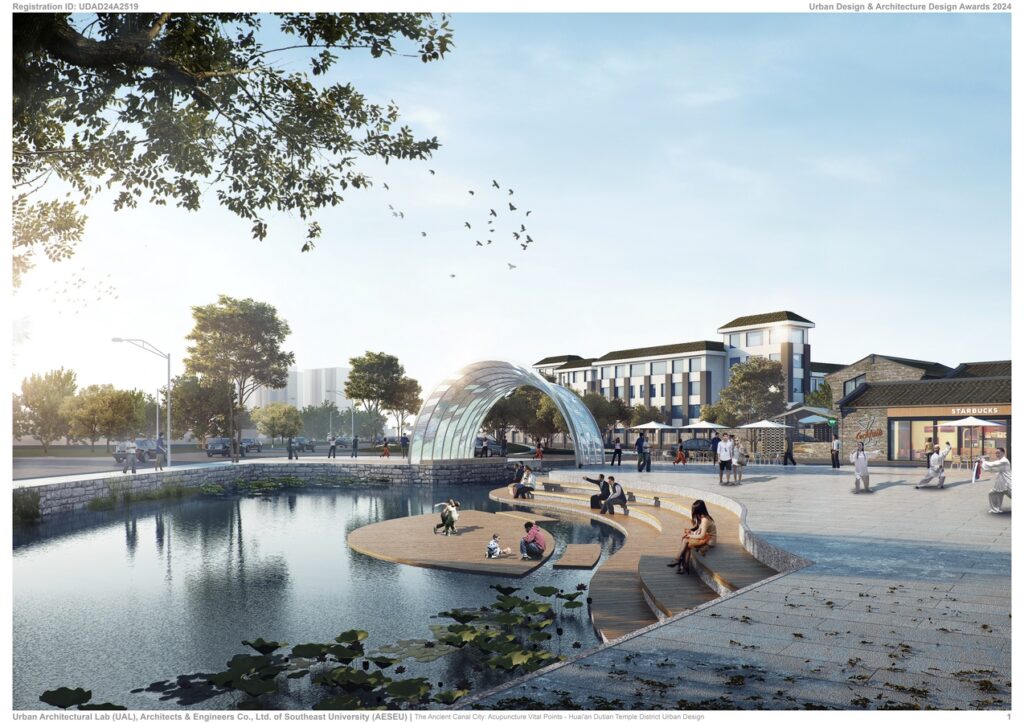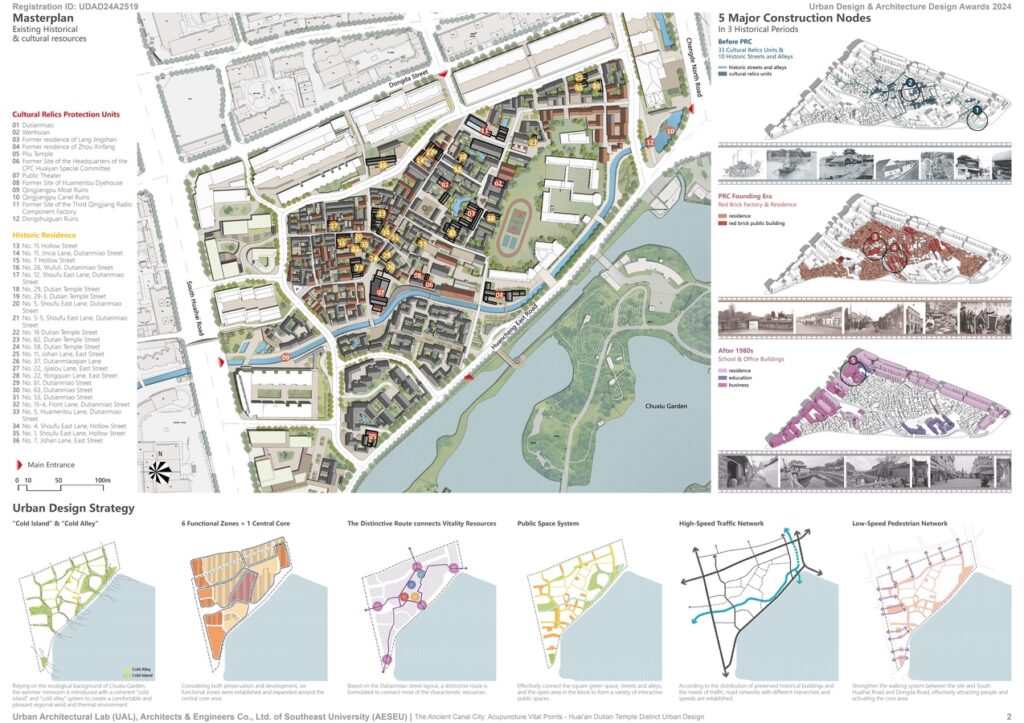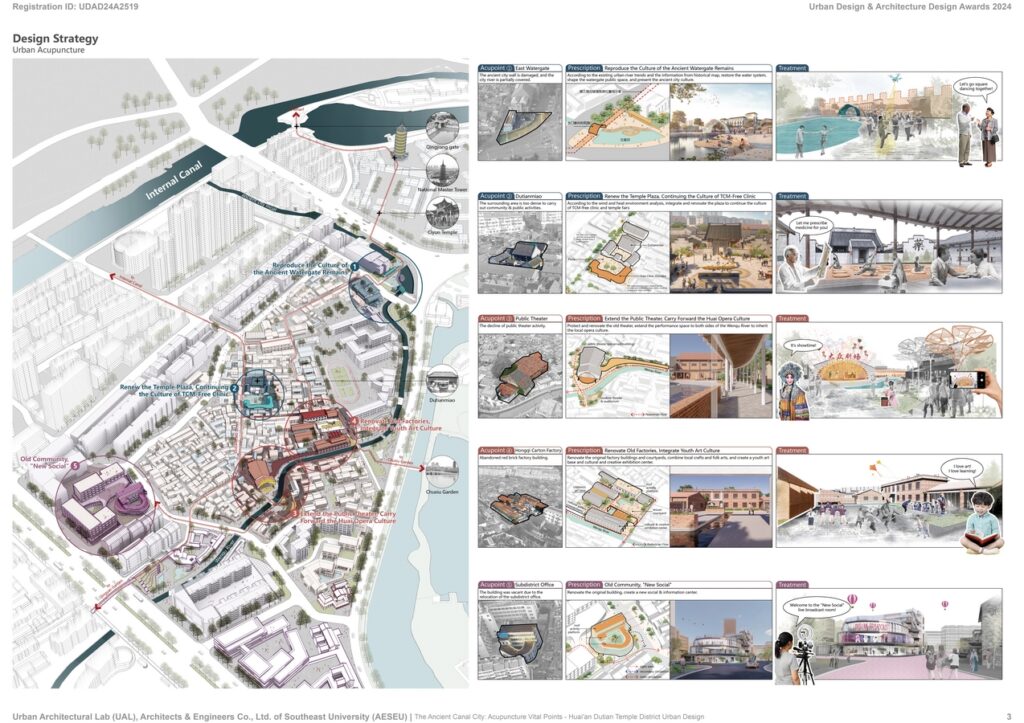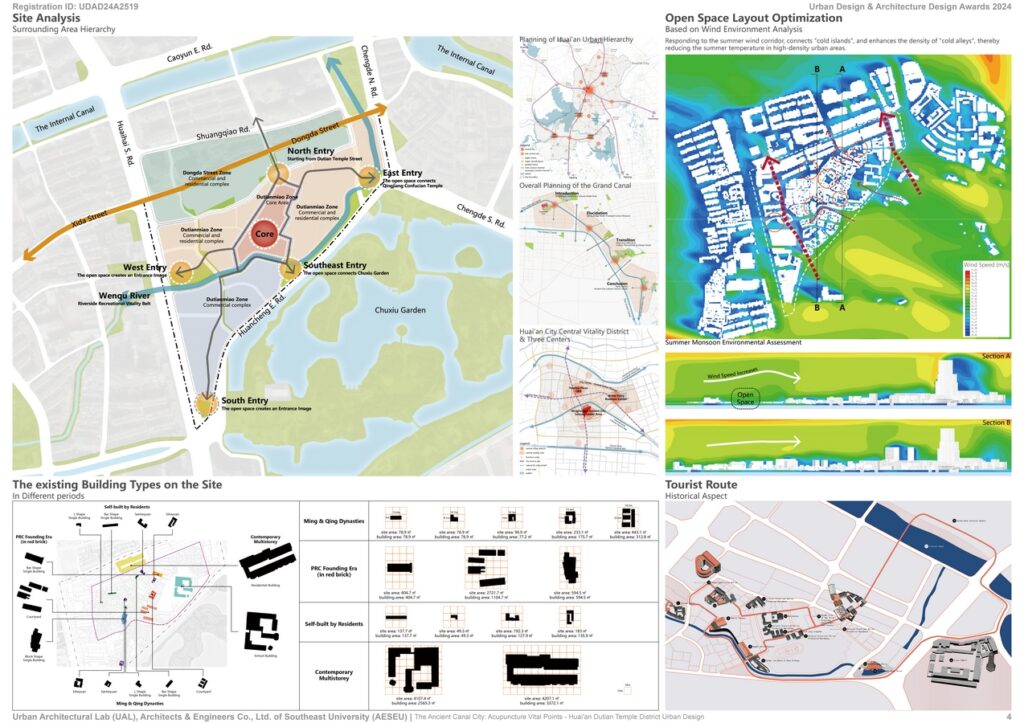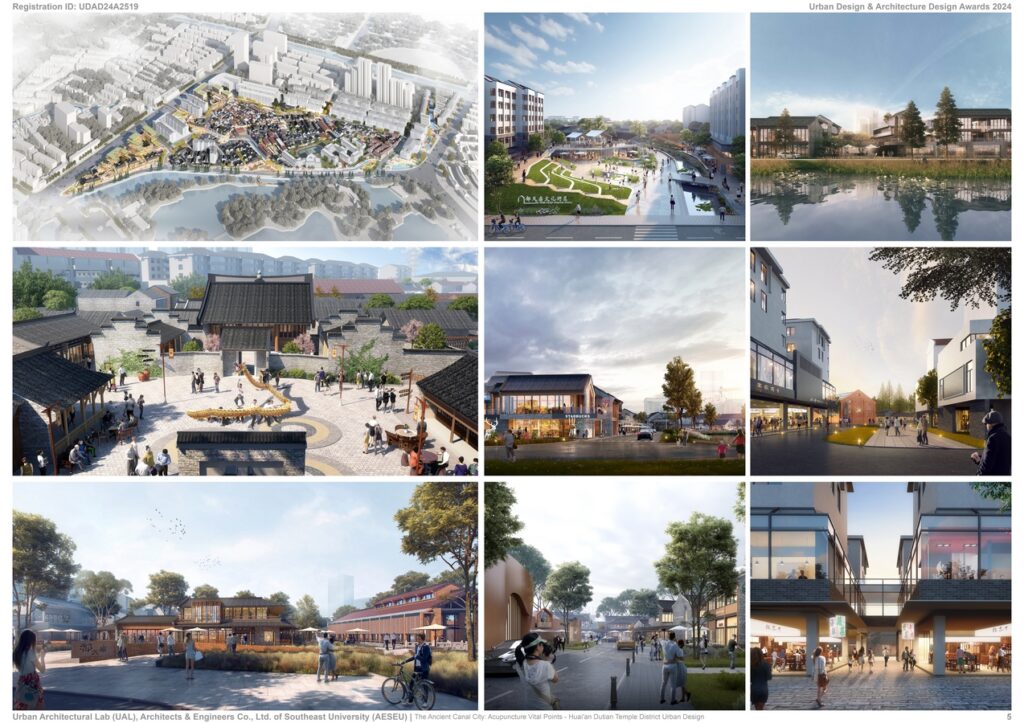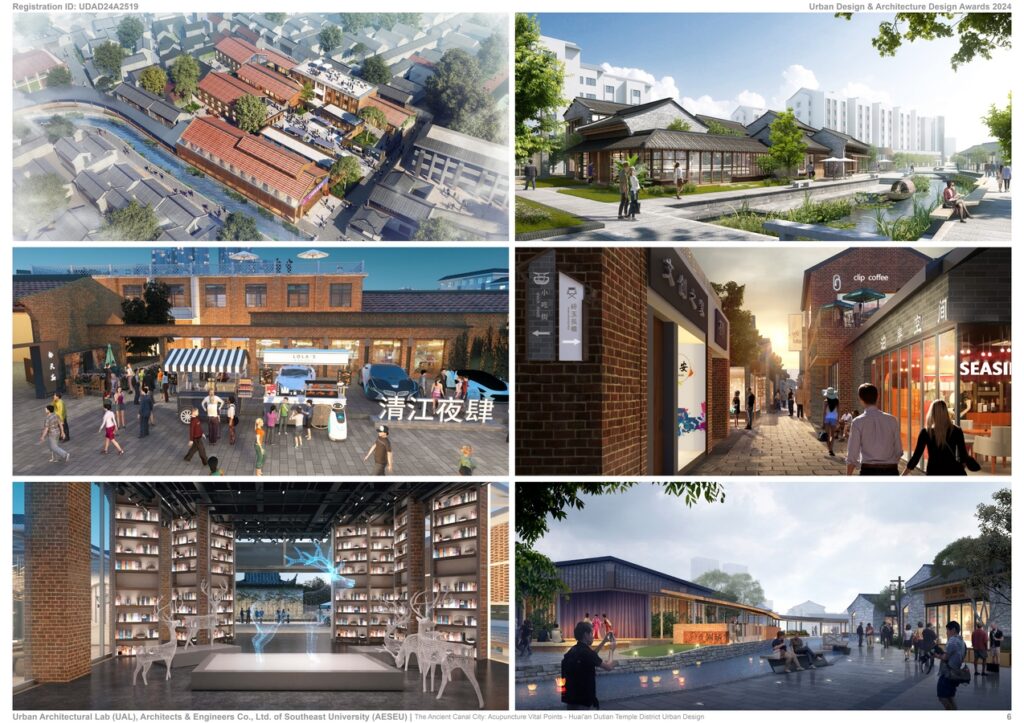Dutian Temple District is located in the heart of Huai’an, the hub of the “Beijing-Hangzhou Grand Canal”, representing precious authentic traditional settlements of Qingjiangpu Ancient City. The site holds rich spatial information, but currently suffers from high building density, inconvenient transportation, aging infrastructure, and a lack of vibrancy. The design employs a unique “urban acupuncture” strategy, aligning with local traditional Chinese medicine culture. By localizing transformations, it aims to trigger positive changes in local environment, revitalizing the area and renewing the city. The key lies in accurately identifying the “acupuncture points” through a targeted approach that ensures precise intervention.
Urban Design & Architecture Design Awards 2025: Entries Open!
Take your work to the next level. Register Now…
Gold 🏆 Winner
Urban Design & Architecture Design Awards 2024
The Ancient Canal City: Acupuncture Vital Points – Huai’an Dutian Temple District Urban Design
Urban Design (Concept)
Firm
Urban Architectural Lab (UAL), Architects & Engineers Co., Ltd. of Southeast University (AESEU)
Architect/Designer
LIU Hua, MA Xiaodong, HAN Dongqing, GUI Peng, SUN Fei, TAN Liang, ZOU Kang
Design Team
WANG Yang, LU Yin, XU Yuping, PANG Yueting, YANG Fan, LU Rui, YANG Wenxin, SHU Hongda, ZHOU Xin, YAO Di, TANG Ying, LI Yu, XU Yipin
Location
Huaian City, Jiangsu Province, China
Country
China
Photographer/Copyright
©Urban Architectural Lab (UAL), Architects & Engineers Co., Ltd. of Southeast University (AESEU)
The urban design leverages existing historical heritage and information, aiming to present and protect the Internal Canal and Qingjiang Ancient City. It connects historical cultural resources and service facilities, actively shaping an important historical and cultural route in Huai’an. Simultaneously, it enhances infrastructure, improves public services, and elevates the quality of tourism facilities. The design focuses on presenting the diverse architectural features of the canal settlements, creating an open and inclusive urban leisure space and a vibrant community that exemplifies shared vitality.
The urban design incorporates the assessment of microclimate, responding to the summer wind corridor by widening streets and waterfront spaces. It connects the local “cool islands” and enhances the density of “cool alleys”. By expanding open spaces according to heritage resources distribution, it creates a comfortable living environment.
Rather than emphasizing specific historical styles, the design respects various local historical periods, preserving architectural style diversity. It mitigates the decline of cultural aesthetics through adaptive reuse instead of demolition. With low-carbon maintenance, it adapts to forward-looking living needs, envisioning the Dutian Temple as a snapshot of time embedded within its historical growth.
The overall design can be summarized into three aspects:
- Recognizing and Integrating Fragmented Historical and Cultural Resources at Multiple Scales
At the urban scale, boundaries, pathways, and landmarks of Qingjiang City are identified and highlighted with cultural value. At the district scale, the preservation plan has expanded from 14 to 33 heritage units, for protection and exhibition. At the site scale, it transforms the plaza of Dutiang Temple into a cultural hub, revitalizes Dazhong Theater for drama preservation, optimizes the waterfront space with historical aesthetics, incorporates public amenities into the factory site, and preserves the Community Center.
- Inheriting Local Culture Based on the Block and Building Levels
The urban design divides the area into primary blocks based on streets and alleys, and secondary blocks based on ownership, creates smaller blocks that align with traditional block patterns, and facilitates the building’s layouts while maintaining the continuity of historical texture. Simultaneously, it incorporates local architectural scale, unit composition, and distinctive features.
- Incorporating Contemporary and Future Needs
The Dutian Temple district is home to a diverse population, remaining a thriving historical district. The design aims to enhance beauty and livability through the advance of time, the old streets and alleys will exude a stronger sense of nostalgia while residents experience convenience and a heightened sense of happiness in their daily lives.


